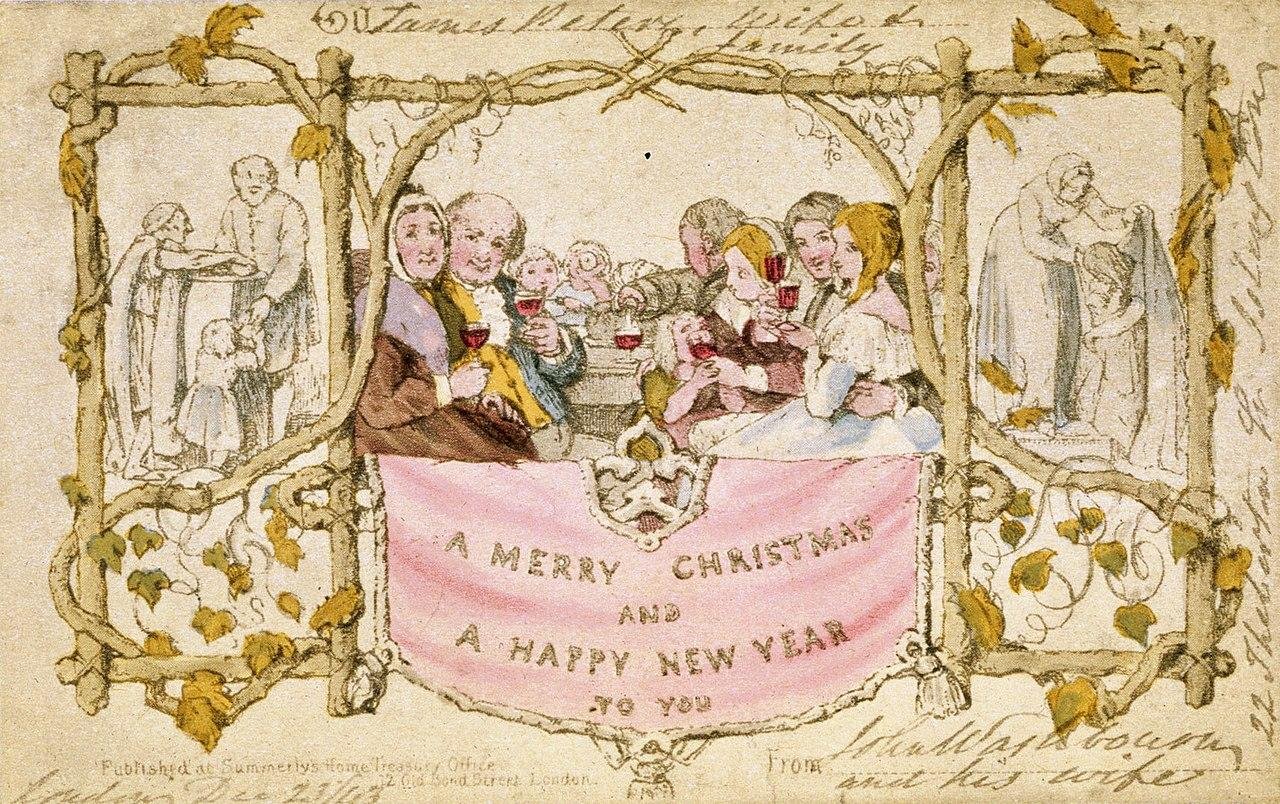faith
How Nostalgia Sparked the Creation of the First Christmas Card

Every holiday season brings echoes of nostalgia, with many lamenting, “Christmas just isn’t like it used to be.” Such sentiments are not novel; the evolution of Christmas traditions has long been a topic of discussion. Historical records indicate that as customs morph, there are always those who yearn for the past.
In the 1830s, William Sandys, an English solicitor, documented the anxieties of Britons regarding the fading of traditional Christmas practices. He specifically voiced concerns about the decline of public caroling, observing that it seemed to slip further into neglect each year, which he interpreted as a reflection of decreasing hospitality and revelry during the holiday season.
Yet, the 19th century also heralded new traditions. Surprisingly, many of the holiday customs introduced during Sandys’ era have since become ingrained in modern festivities—like the Christmas card, which integrated past practices into a new celebratory framework.
In recent decades, annual sales of Christmas cards have dwindled, especially in the UK, where sending printed greetings once epitomized a quintessential holiday. Historians Martin Johnes and Mark Connelly emphasize that throughout the 20th century, Christmas cards were fundamental to Britain’s rich tapestry of holiday rituals, akin to children hanging stockings or enjoying Christmas pantomimes.
However, it’s crucial to note that none of these practices were inherent to early Christmas celebrations. They emerged as standard elements of British Christmas in the latter half of the 19th century, illustrating the relatively recent evolution of these customs against the backdrop of Christmas’s extensive 2,000-year history.
The tradition of mailing Christmas cards first appeared during the mid-19th century, stemming from the industrial revolution. Innovations in printing and new transportation methods, particularly the railway, made it financially feasible. The introduction of the Penny Post in 1840 further facilitated this custom, allowing individuals to send cards across the UK for just a penny.
Most historians pinpoint the inception of Christmas cards to 1843, coinciding with the release of Charles Dickens’ “A Christmas Carol.” That year, inventor Henry Cole tasked artist John Callcott Horsley with creating a card that would streamline his Christmas correspondence.
Although the original card’s design was too expensive for the average Victorian at one shilling each, it sparked a wave of cheaper alternatives that gained popularity by the late 19th century, solidifying the Christmas card as a holiday mainstay.
Interestingly, the inaugural Christmas card was not a radical innovation; it drew heavily from existing British holiday traditions. Historians Timothy Larsen and Neil Armstrong assert that the development of new customs in the 19th century sought to complement or replace fading practices.
Many Britons in 1843 mourned the loss of “Old English” Christmas customs, particularly those emphasizing hospitality and social visits. Popular accounts, such as Washington Irving’s works from the 1820s, romanticized these traditions and played a significant role in shaping public discourse around the changing nature of Christmas.
Despite the historical accuracy of these “old” customs being debatable, they became pivotal in discussions surrounding the perceived decline of community-oriented Christmas practices, including feasting and charitable acts, amid Britain’s growing urbanization.
The aesthetic of Cole’s card—which depicted a family adorned with holly and mistletoe, complemented by charitable scenes—evoked the spirit of these older traditions. It visually connected the social act of toasting at holiday gatherings with the act of sending a card, signaling a bridge between past and present.
Imagery from these early cards often showcased the hallmarks of traditional Christmas celebrations, blending nostalgia with innovation. The rise of the Christmas card in Victorian society exemplified how longing for the past fostered new traditions amidst dramatic shifts in communication and social interaction.
Currently, as technology continues to reshape society, some foresee the potential eclipse of the Christmas card. History suggests that should this transpire, any replacement will likely echo remnants of cherished customs from yesteryears, proving the enduring impact of nostalgia in shaping modern celebrations.


















